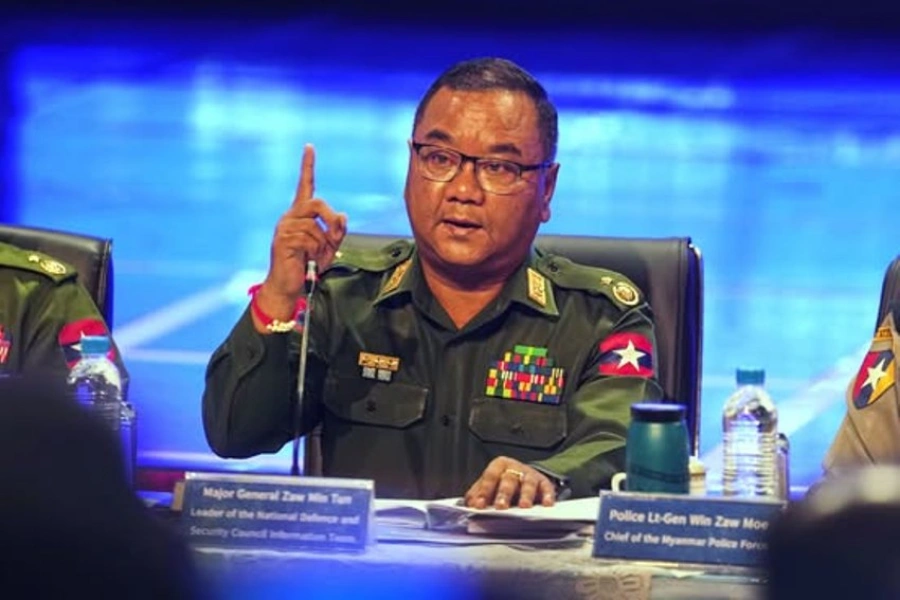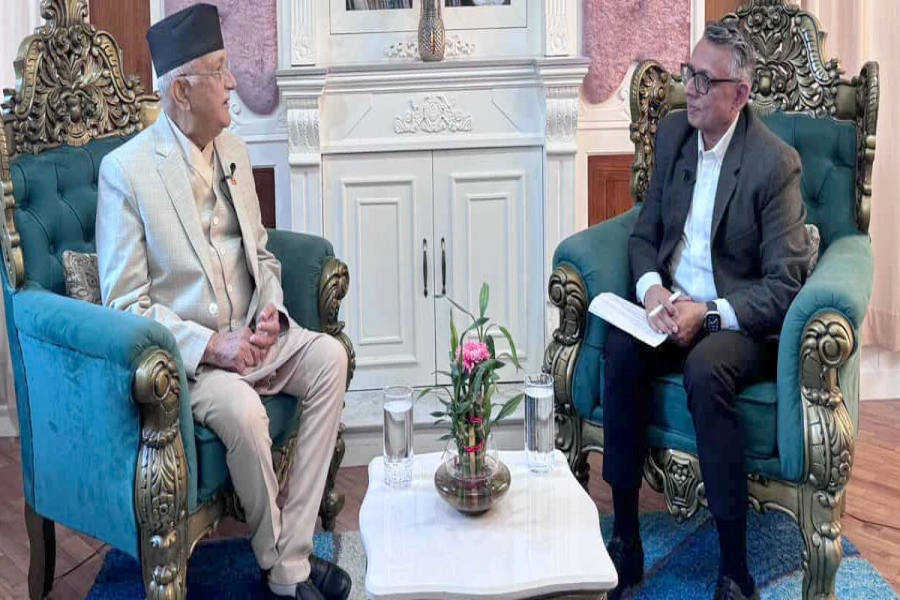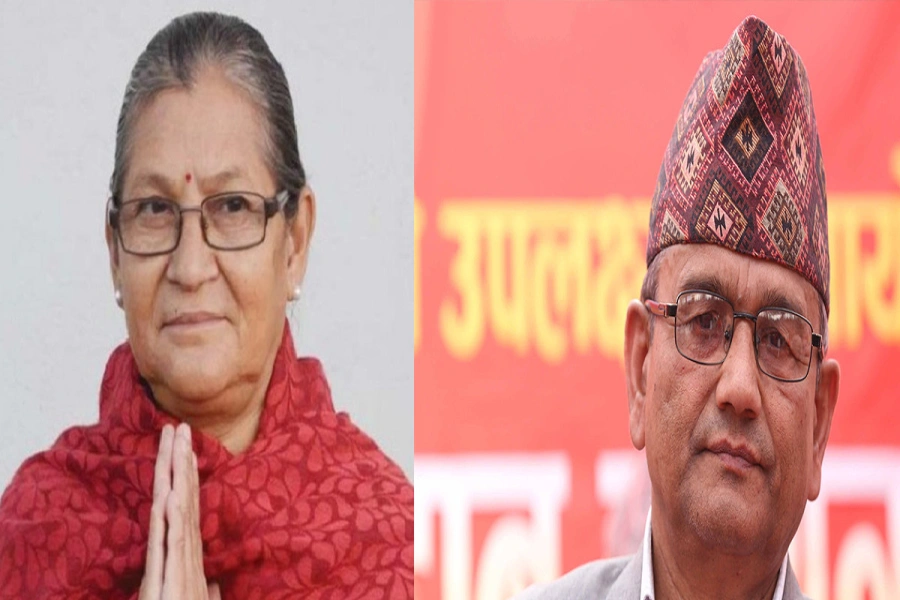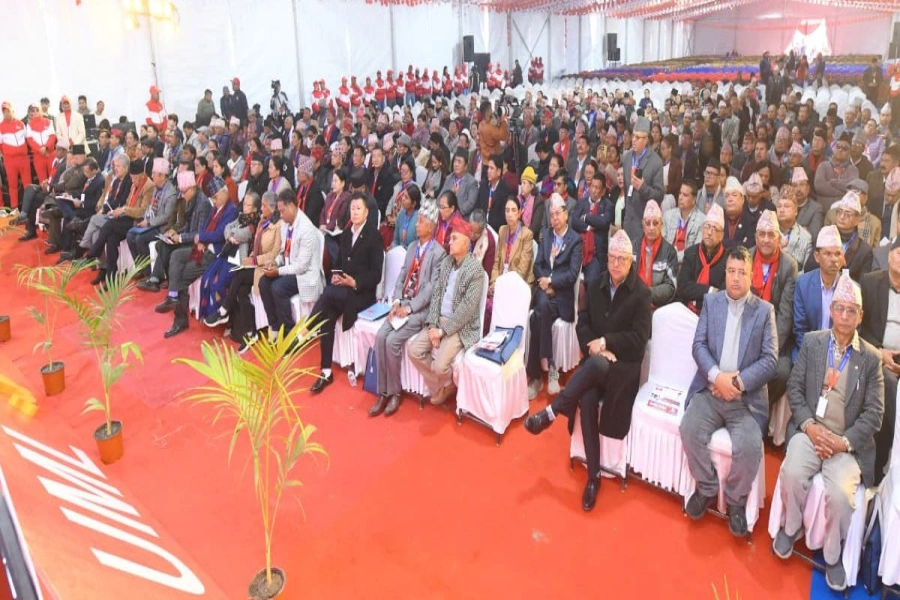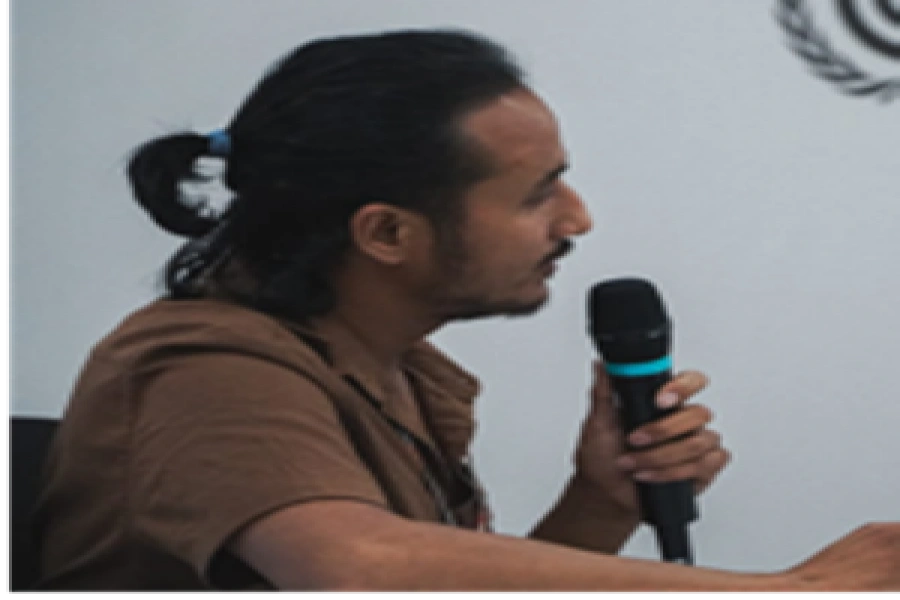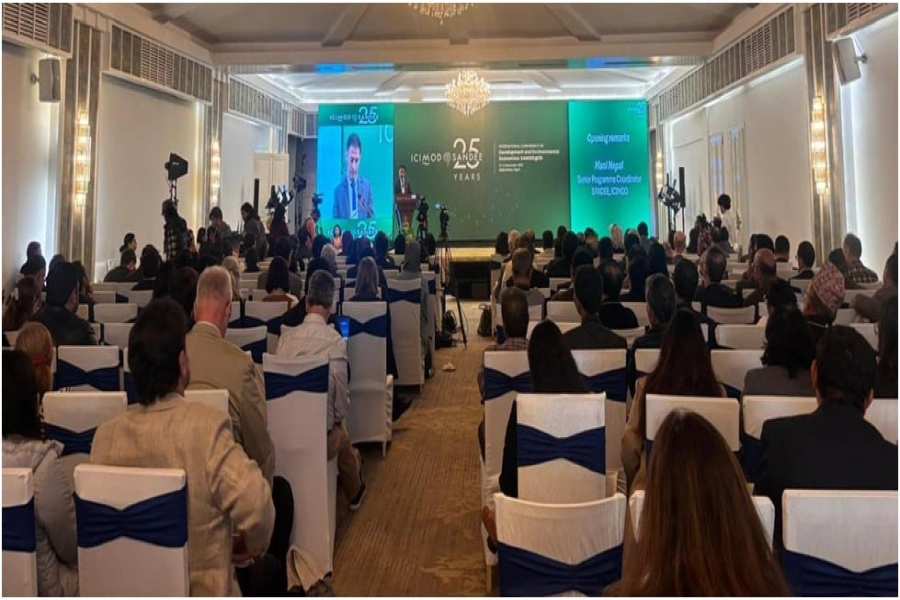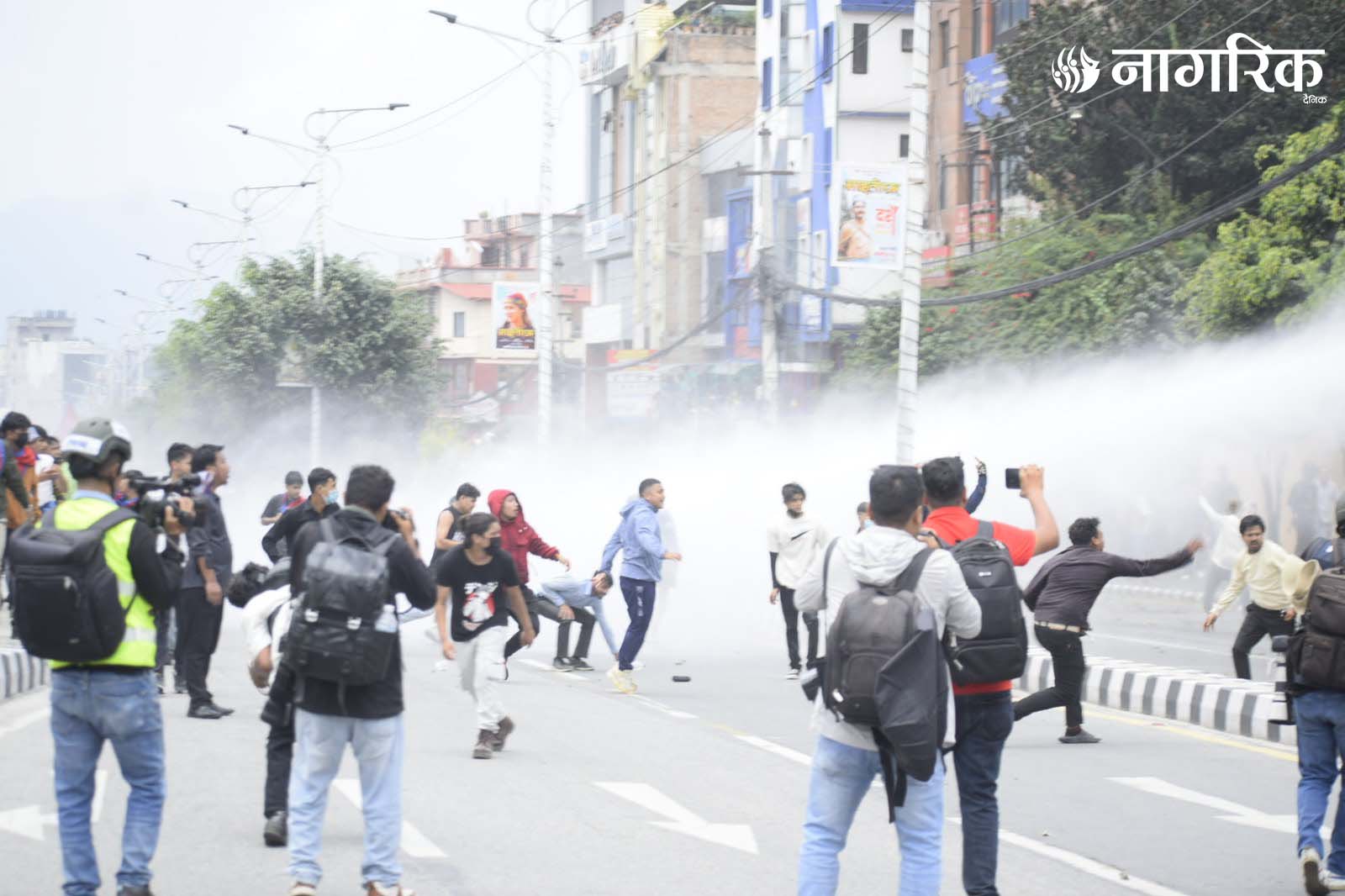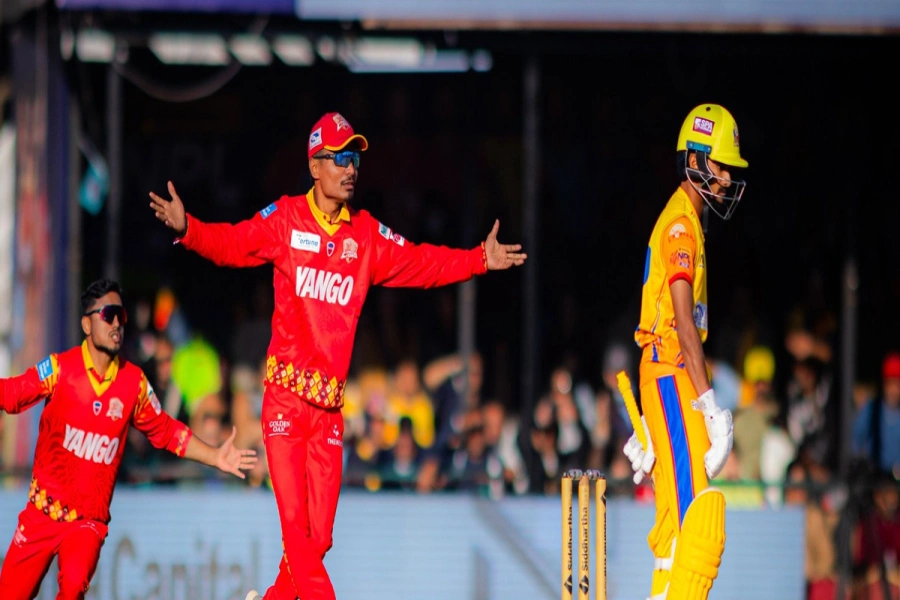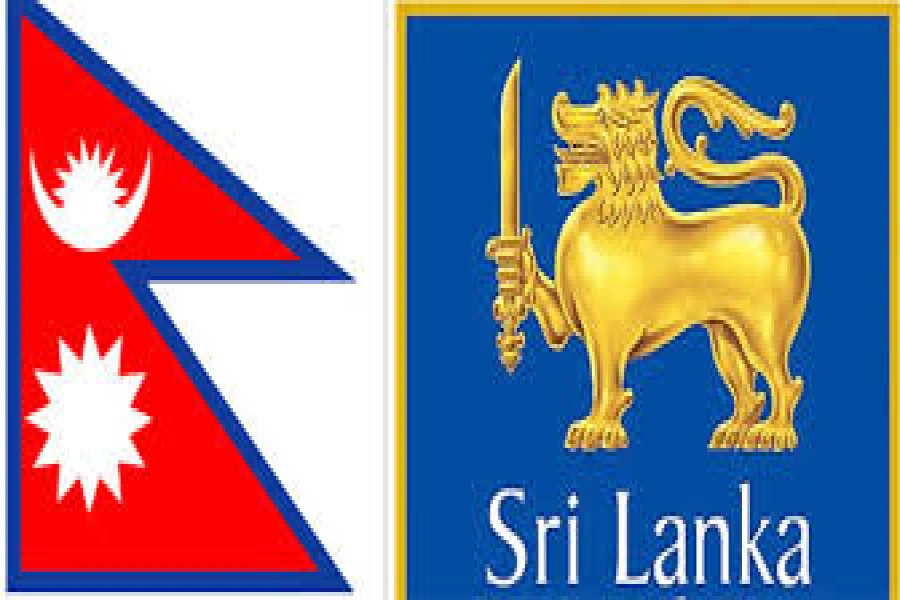The investiture ceremony of Madan Puraskar and Jagdamba Samman—complete with garlands made of grass for awardees draped in Labeda-Suruwal and savoury dishes in leaf-plates for guests and participants—has traditionally been held on the eve of Dashain. Latecomers into the game of giving prizes have upheld the convention.[break]
In proportion to the population of native speakers, Nepal probably has one of the largest numbers of prizes awarded for contributions made to language and literature. It is fairly difficult to find an author, a poet or a critic of note in Kathmandu who has not received a prize or has failed to be ‘honoured’ by some or the other group, society, community, club, fund, foundation, NGO, school, college, enterprise, business house or even special-purpose Guthis created solely to confer awards.
Apart from focusing attention upon recipients and sponsors, award functions turn out to be social events where creators mingle with literary pretenders, everyone criticize the prize that they have had failed to get, unload their bitterness upon ‘illiterate’ critics, lambaste partisan juries, lament the culture of coterie, and bemoan the lack of rewards in literary pursuits.
Pierre Bourdieu coined an expression—cultural capital—to refer to the collection of non-material advantages that the dominant group within a society amasses to perpetuate its hold over all the rest. Cultural capital includes, but is not limited to, social assets such as values considered common, beliefs portrayed as desirable, attitudes encouraged to be cultivated, and competencies in language and customs consecrated as incontestable. Education is the principle means of creating cultural capital, but media, artistic pursuits, and prizes add value to the endeavour. When backed by other instruments of hegemony—political, economic and ideological—cultural power becomes a part of the national ‘commonsense’ that one dare question at his or her own peril.
In subtle but definite ways, plethora of prizes instituted by farsighted Nepali capitalists have contributed to the strengthening of the identity of uniformity based on the “one language, one religion, one dress, one culture, and one people under one overarching national norm” formula. Awards, prizes, honours and recognitions help strengthen bonds of unity between the people of the hegemonic group that may break due to Marxist (economic, class and production) or Weberian (societal, status or consumption) modes of contestations. The broad consensus over ‘national culture’ is reinforced, rather than weakened, by fractiousness and backbiting common among litterateurs.
Prize politics
A theory attributed to Professor Wallace Stanley Sayre (1905-1972) of Columbia University—the so-called Sayre’s Law—states: “In any dispute the intensity of feeling is inversely proportional to the value of the issues at stake,” and goes on to add by way of a corollary, “That is why academic politics are so bitter.” Though the purses of some of the awards are substantial and publicity fallout considerable, politics of prizes are often acrimonious.
No prize, no matter how highly regarded, is above reproach. The apostle of peaceful politics—Mahatma Gandhi—failed to get the Nobel Peace Prize. The United Nations has since made amends by declaring his birth anniversary as the International Day of Non-Violence. For some strange reasons, however, Barack Obama was conferred with Nobel Peace Prize post-haste in 2009, lest he spoiled his chances by intensifying the ongoing occupation of Afghanistan and Iraq or go after the regime in Teheran full blast!

Illustration: sworup Nhasiju
In a statement that had sounded almost impish to naïve ears, the Norwegian Nobel Committee had declared that the Nobel Peace Prize for 2009 was awarded to President Barack Obama for his “extraordinary efforts to strengthen international diplomacy and cooperation between peoples.” The venerable New York Times noted recently that prior to conferring its Literature Prize upon Mo Yan, the Nobel Committee had “rarely, if ever, awarded one of its prizes to a writer or scholar embraced by a Communist government.” Apparently, Communists bestow medals upon one of their own while capitalists place their faith in cash prizes to woo dissenters from the opposing camp.
A wealthy Nop (Nepali-origin professional) entrepreneur, based in one of the post-Soviet oligarchies, has instituted prizes in the name of his village of birth. Recipients of this year’s largesse are two authors so much alike in their background and yet so far apart in their worldview. Both were born Brahmins, grew up in challenging and yet relatively comfortable surroundings in their different locations, acquired higher education considered more than adequate by the standards of their time, and embraced Marxism-Leninism in the hope of deliverance.
In the autumn of a fulfilling life—may he be blessed with good health for many more years!—the senior scribe has come full circle and now finds solace in traditions. The youthful and middle-aged writer still spits fire, though seldom of the doctrinaire Marxist-Leninist-Maoist variety these days. It was amusing to see them share the same dais and speak to the audience in their distinctively different ways.
In the grand tradition of literary conferment ceremonies of Nepal, journalist-turned-writer Madan Mani Dixit and creator-turned-commentator Khagendra Sangraula were bedecked in garlands of grass.
A garland of grass—Corona in Latin—has a haloed history. According to legends, “A chaplet or garland of grass, indigenous to the place besieged,” was bestowed upon the bravest of generals “who had raised a siege.”
The necessity of grass-necklace in Nepal is probably more mundane. A green garland, festooned with shiny golden and silver foil threads, was perhaps a convenient replacement during auspicious ceremonies when real flowers were hard to obtain.
Sangraula was dressed in what diplomatic missions mention as “smart casuals” in their invitation cards. Almost nonagerian, Dixit in his Labeda-Suruwal ensemble resembled every inch a youthful bridegroom.
Loyal readers from the literary fraternity read out effusive panegyrics about Dixit’s life and Sangraula’s works. Acceptance speeches of the two renowned authors, however, had different emphases. The senior writer mentioned almost in passing that the day’s award took his tally to over five dozen. The fiery columnist remarked, tongue firmly in cheek, that for all their hoopla, prizes hardly mattered much in establishing the merit of literary works. BP Koirala and Bhupi Sherchan failed to find favour with juries of certain highly regarded award committees. However, all the prizes instituted in Nepali language combined would not measure up to the reputation of novelist BP and poet Bhupi.
Sangraula had merely teased those who find the glory of instituting prizes irresistible. Nonagerian academician Satya Mohan Joshi took upon himself to remind all prospective prize givers and literary sponsors that the challenge lay in publishing works of authors writing in many national languages of Nepal. With the directness and simplicity of an organic intellectual, Joshi emphasized the necessity of manufacturing ‘Nepaliness’ through literary efforts.
A new corpus of ‘cultural capital’ would indeed have to be constructed to support the Federal Democratic Republic of Nepal currently being imagined. About its form and content, there is ample space for discussions and debate.
Cultural context
Academician Joshi has been an establishment figure for long. But from the vantage point of experiences gathered over a lifetime, he can probably see the futility of repetitive exercises. After securing their places in literary history, it is doubtful if additional prizes would do any good to the reputation of Dixit and Sangraula. Joshi probably wants to draw the attention of prospective sponsors to the challenges of building ‘national’ rather than ‘nationalistic’ cultural capital.
At a certain point of Nepal’s history, the notion of ‘Nepalipan’ must have had some importance. In the changed circumstances, its limitations have become a dangerous liability. Prashant Tamang, a Gorkhali in the service of Calcutta Police and the winner of Indian Idol television show, claims in an audiovisual commercial aimed at consumers of Nepal that he is “Proud to be a Nepali.” Kathmandu-born and based Maithil journalist Prashant Jha, who writes mostly in English but comments also in Nepali, cannot take away that pride from his Gorkhali namesake.
Cultural identity goes deeper than political affiliations. It makes a Pahade Bahun feel at home in the house of a Gorkhali cowherd in Assam but be ill-at-ease at the hut of a fellow Maithil Brahmin in his own country. Ethnicity is almost natural while political identity needs careful cultivation. For decades, all efforts were made to package characteristics of Gorkhali ethnicity—itself an imagined identity—into markers of ‘Nepalese’ nationality.
Empires of the past had a simple formula to build national identity in line with nationalistic aspirations of the dominant community. Shahs and Ranas had little time or patience for the ancestors of Prashant Tamang or Saral Shrestha, the boy named Soldier of the Year by the US Army this year. Subject communities had to confirm to the values of ruling clans or be left out. Tamangs and Shresthas of yore may not have had any part in the formulation of ‘Nepalipan’ but their descendents fall under the same formation by default. Unfortunately, the tent is not big enough anymore to accommodate all peoples of Nepal under a democratic order.
It is easy to draw from shared memories and write great narratives. Poetry is best composed in the language of dreams, which again come from experiences, realizations and aspirations. But how does one build an imagination that incorporates past injustices, present predicaments and opportunities of future? Perhaps therein lies the difficulty of building pathways from ‘Nepalipan’ to ‘Nepaliyata’ and creating an accommodative ‘Nepaliness.’ The discourse has found its place in politics. Perhaps literature too would have to follow.
Unfortunately, few were listening to the implorations of the anxious, ageing but still alert academician Joshi. Half the hall had emptied midway through his speech. The other half of the audience, including some right on the stage, was talking to each other even as the old warhorse of cultural politics looked beyond the horizon for footsteps of future history. Only arts and literature can imagine its approximate shape and likely force.
Lal contributes to The Week with his biweekly column Reflections. He is one of the widely read political analysts in Nepal.
Bibeksheel Sajha scraps its controversial document ‘Nation abov...



